How to Completely Remove and Reinstall iTunes on Windows Easily
How to completely remove and reinstall iTunes on Windows XP / Vista and /Windows 7? We will show you a complete guide about removing and reinstalling iTunes on a Windows computer.
Common iTunes Tips
iTunes Music Management
iTunes Library Transferring
Fix iTunes Issues
In some instances, you may not be able to use our software to find or detect your iOS devices. Based on our experience, this situation is possibly caused by some of the iTunes components have been distorted or modified by other programs. To repair this, you may need to remove all traces of iTunes, QuickTime, and related components from your computer before reinstalling iTunes.
Don’t Miss: How Can I Transfer Music from iPhone to iTunes >
You may concern about the iTunes Store purchases or songs imported from CDs that will be deleted. Don’t worry. They are saved in your My Music folder by default and are not removed even if you completely remove iTunes. However, we still recommend you to ensure that your iTunes library is backed up. If you’re unsure how to backup, see iTunes: Back up your iTunes library by copying to an external hard drive.
These iTunes removing and reinstalling steps may take a large amount of time to complete, depending on your computer system performance.
iTunes 11.1.5 for Windows (64-bit) is with 142MB file size (222MB for Mac OS X), so make sure your computer has at last 400MB of available disk space to install the iTunes 11.
Part 1: Open Control Panel, Remove iTunes and related components
Use the Control Panel to uninstall iTunes and related software components in the following order and then restart your computer:
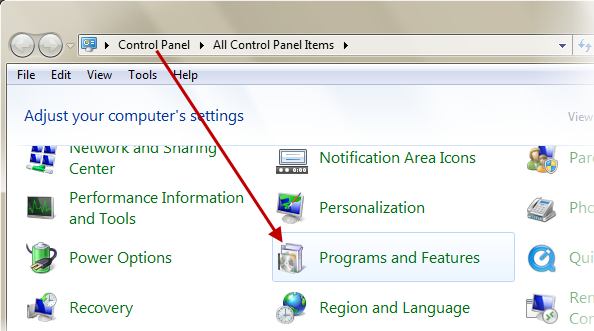
Remove iTunes and related components from Control Panel
- iTunes
- QuickTime
- Apple Software Update
- Apple Mobile Device Support
- Bonjour
- Apple Application Support (iTunes 9 or later)
Important: Uninstalling these components in a different order, or only uninstalling some of these components may have unintended effects.
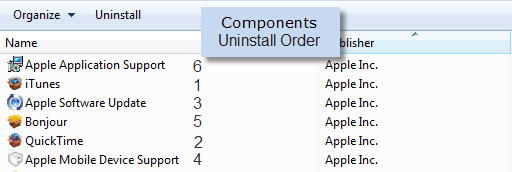
Uninstalling iTunes components in this order
Part 2: Verify iTunes and its components are completely uninstalled
In most cases removing iTunes and its related components from the Control Panel will remove all supporting files belonging to those programs. In some rare cases though, files may be left behind. After following the previous steps, you should confirm that the following files and folders have been removed. If any are left behind, remove them now:
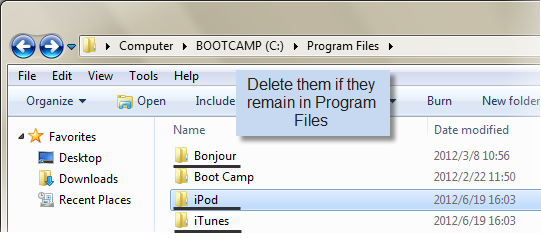
Check iTunes and components are completely uninstalled
C:\Program Files\Bonjour
C:\Program Files\Common Files\Apple\ (At times the system may keep you from deleting this folder. You need to restart the computer and then remove this folder.)
C:\Program Files\iTunes\
C:\Program Files\iPod\
C:\Program Files\QuickTime\
C:\Windows\System32\QuickTime
C:\Windows\System32\QuickTimeVR
If you have a 64-bit version of Windows, you will need to confirm that the following folders have been removed as well:
C:\Program Files (x86)\Bonjour
C:\Program Files (x86)\Common Files\Apple\
C:\Program Files (x86)\iTunes\
C:\Program Files (x86)\iPod\
C:\Program Files (x86)\QuickTime\
C:\Windows\SysWOW64\QuickTime
C:\Windows\SysWOW64\QuickTimeVR
Part 3: Reinstall iTunes and related components
If the issue you are troubleshooting is not resolved after following these steps, it is not necessary to remove and reinstall iTunes multiple times. Instead, you may find helpful information on the Apple iTunes Support page, such as troubleshooting steps related to specific alert messages.
Tips 1: for Windows XP users, the detailed steps may have some differences;
2. After uninstalling iTunes with the traditional way through Programs and Features in the Windows Control Panel, it is very important to verify iTunes and its components are completely uninstalled;
3. Please also note that we are not sure this tutorial can 100% solve your trouble. So if there is no luck with this help page, please feel free to contact us and let us know all the details about your situation so that we can make a better analysis for you.
Part 4. How to Reinstall iTunes in A Few Clicks
Generally, you can reinstall iTunes with the methods mentioned above. But there are still some exceptions, aren’t they? In this part, we would recommend a professional troubleshooter to help you reinstall iTunes quickly and easily. AnyFix is proven to be a labor-saving tool that commits to providing professional and easy-to-use solutions to fix iTunes and Apple system issue. You can solve over 130 system problems and 200+ iTunes issues with a few clicks.
The listed steps will give you a clear tutorial to reinstall iTunes on your computer.
Step 1. Download AnyFix and run it on your computer > connect your iOS device to the computer > choose the iTunes Repair.
Free Download * 100% Clean & Safe

Tap on iTunes Repair from Homepage
Step 2. To reinstall iTunes is one of the installation issues. Therefore, you can click on iTunes Installation/Download/Update Errors > Tap on the Fix Now.
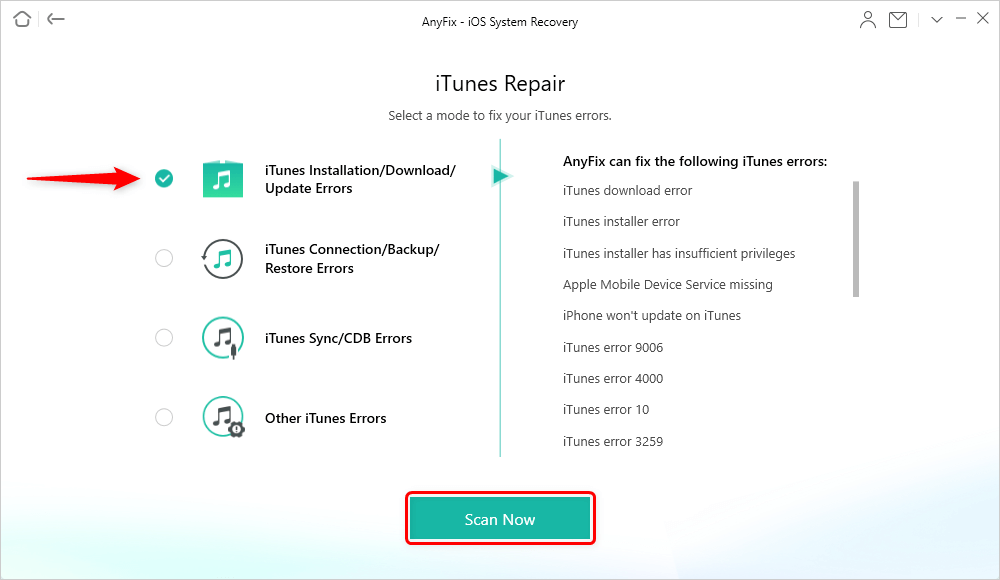
Choose Installation/Download/Update Errors
Step 3. AnyFix will analyze iTunes’ components to check out the problem. Moments later, click on the yes and OK button to continue.
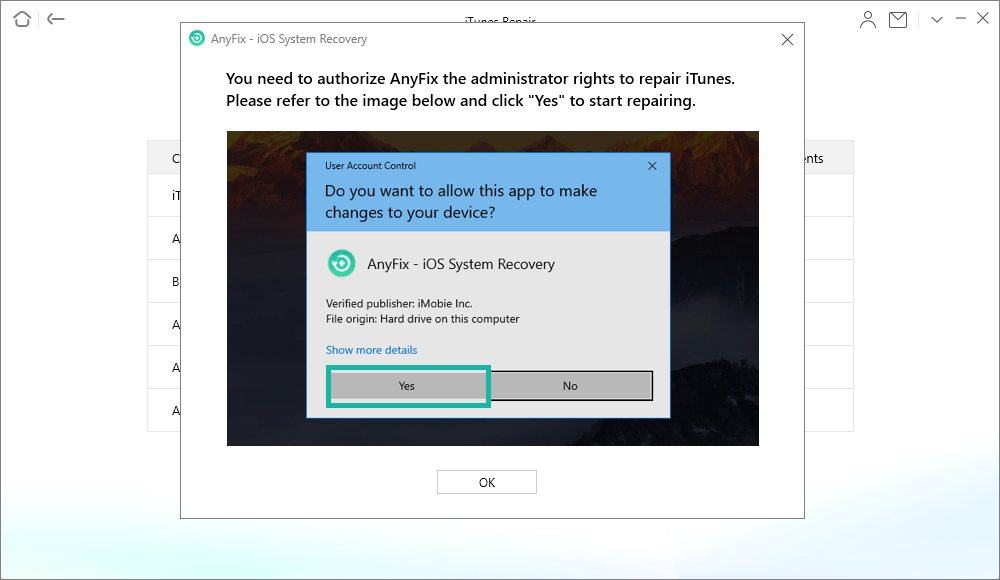
Authorize AnyFix on your Computer
Step 4. The successfully repaired page on your screen.

iTunes Repair Completed
The Bottom Line
All of these methods mentioned above are useful and help tens of thousands of users reinstall iTunes on their computers. When you finished the reinstall process, you can use your iTunes from scratch. If you ever need a simple and no-skill-required solution to reinstall your iTunes, you can give this to AnyFix which won’t let you down.
Product-related questions? Contact Our Support Team to Get Quick Solution >

